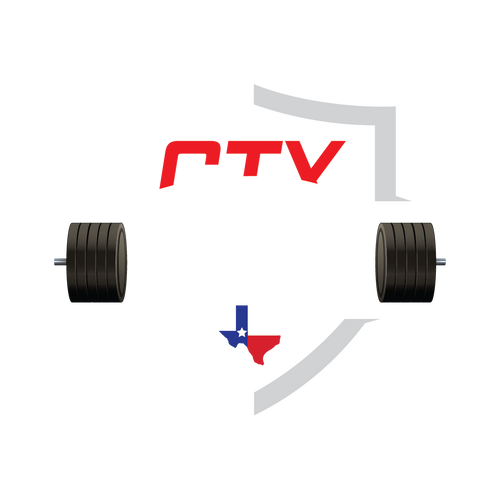How To Care For Your Fitness Equipment
CTX wants to ensure the longevity of your equipment purchase, below you'll find documentation on how you can care for your specific pieces.
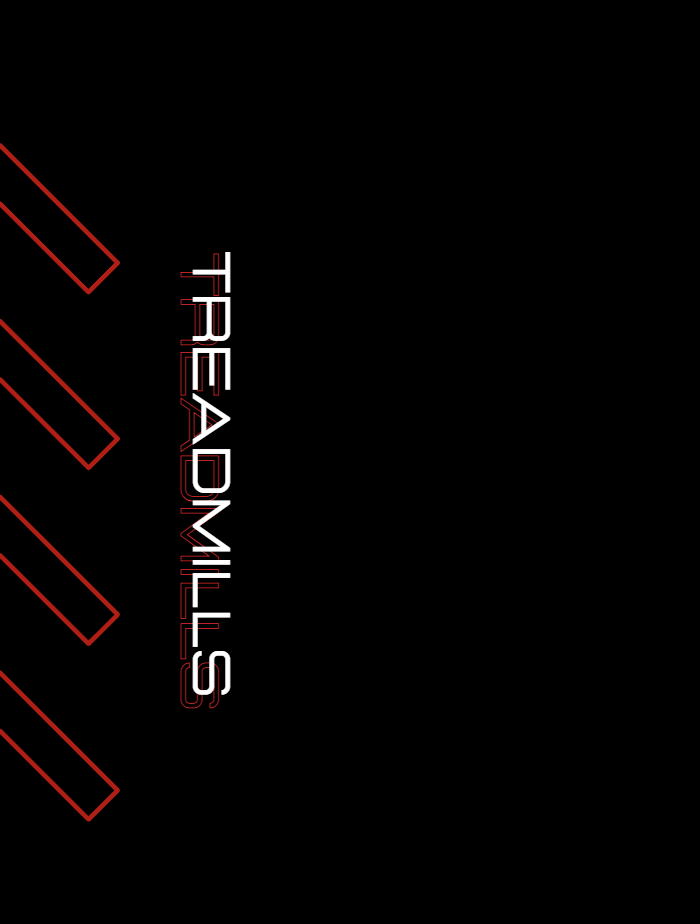
How To Care For Your Treadmill
Clean the machine regularly: Dust and debris can accumulate on the treadmill over time, so it's important to clean it regularly. Use a soft cloth or sponge and mild soap to wipe down the surface of the machine, paying special attention to the belt, rollers, and motor.
Check the belt tension: The belt should be tight enough to prevent slipping, but not so tight that it puts undue stress on the motor. To check the tension, lift the belt and see if it moves more than an inch. If it does, adjust the tension according to the manufacturer's instructions.
Lubricate the belt: Over time, the belt can become dry and lose its elasticity, which can cause it to wear out faster. To prevent this, you should lubricate the belt regularly with a silicone-based lubricant.
Inspect the rollers: The rollers should be smooth and free from any dents or cracks. If you notice any damage, replace the rollers immediately to prevent damage to the belt.
Check the motor brushes: The motor brushes are responsible for conducting electricity to the motor, so it's important to make sure they are in good condition. Inspect them regularly and replace them if they are worn down.
Tighten loose bolts and nuts: Vibration and use can cause bolts and nuts to come loose over time, so it's important to check them regularly and tighten them as needed.
Check the power cord and plug: Make sure the power cord and plug are in good condition and free from any damage. If you notice any damage, replace them immediately.
By following these preventative maintenance tips, you can help extend the life of your commercial treadmill and ensure it operates smoothly and safely. It's also important to refer to the manufacturer's instructions for specific maintenance guidelines for your particular treadmill.

How To Care For Your Elliptical
Regular cleaning: Clean the elliptical after each use with a damp cloth to remove sweat and dirt that could accumulate and damage the machine over time.
Lubrication: Apply lubricant to the moving parts of the elliptical machine every few months to keep it running smoothly and prevent wear and tear.
Inspection: Regularly inspect the machine for loose bolts or screws and tighten them as needed.
Leveling: Make sure the elliptical machine is level to prevent unnecessary strain on the frame and components.
Power source: If your elliptical has an electrical component, make sure to plug it into a surge protector to prevent damage from power surges.
User weight limit: Be sure to follow the user weight limit specified by the manufacturer to prevent damage to the machine.
Shoe type: Wear athletic shoes when using the elliptical machine to prevent damage to the pedals.
Routine maintenance: Follow the manufacturer's recommended routine maintenance schedule for your elliptical machine, such as replacing the belt or bearings.
Storage: Store the elliptical machine in a dry and cool area to prevent rust and other damage.
By following these preventative maintenance tips, you can help extend the life of your commercial elliptical and ensure it operates smoothly and safely. It's also important to refer to the manufacturer's instructions for specific maintenance guidelines for your particular elliptical

How To Care For Your Step Mill
Regular cleaning: Clean the step mill after each use with a damp cloth to remove sweat and dirt that could accumulate and damage the machine over time.
Lubrication: Apply lubricant to the moving parts of the step mill every few months to keep it running smoothly and prevent wear and tear.
Inspection: Regularly inspect the machine for loose bolts or screws and tighten them as needed.
Leveling: Make sure the step mill is level to prevent unnecessary strain on the frame and components.
Power source: If your step mill has an electrical component, make sure to plug it into a surge protector to prevent damage from power surges.
User weight limit: Be sure to follow the user weight limit specified by the manufacturer to prevent damage to the machine.
Shoe type: Wear athletic shoes when using the step mill to prevent damage to the pedals.
Routine maintenance: Follow the manufacturer's recommended routine maintenance schedule for your step mill, such as replacing the belt or bearings.
Calibration: Periodically calibrate the step mill to ensure it is providing accurate readings of the number of steps taken.
Storage: Store the step mill in a dry and cool area to prevent rust and other damage.
By following these preventative maintenance tips, you can help extend the life of your commercial elliptical and ensure it operates smoothly and safely. It's also important to refer to the manufacturer's instructions for specific maintenance guidelines for your particular StepMill

How To Care For Your Arc Trainer
- Clean the machine regularly: Wipe down the entire surface of the arc trainer with a soft cloth or sponge and mild soap to remove dust, sweat, and debris. Be sure to clean the footplates, handrails, and console area.
- Inspect and tighten hardware: Regularly check bolts, screws, and other hardware for tightness, as vibration and use may cause them to loosen over time. Tighten them as needed according to the manufacturer's instructions.
- Lubricate moving parts: Apply a silicone-based lubricant to the moving parts, such as joints and bearings, to reduce friction and wear. Be sure to follow the manufacturer's recommendations for lubrication frequency and type.
- Check the drive belt: Inspect the drive belt for any signs of wear, such as fraying or cracking. Replace it if necessary, and ensure the belt tension is correct according to the manufacturer's guidelines.
- Inspect the power cord and plug: Regularly examine the power cord and plug for any damage or wear. If you notice any issues, replace them immediately.
- Calibrate the incline and resistance: Periodically calibrate the incline and resistance settings to ensure they are accurate and functioning properly. Refer to the manufacturer's instructions for specific calibration procedures.
- Examine the console and electronics: Check the console and electronic components for any signs of damage or malfunction. If you encounter any issues, consult the manufacturer or a qualified technician for repair.
- Perform a safety check: Ensure all safety features, such as emergency stop buttons or safety keys, are functioning correctly. Replace or repair any malfunctioning components as needed.
By following these preventative maintenance guidelines for a commercial arc trainer, you can help ensure that the equipment operates safely and efficiently, extending its lifespan. As always, refer to the manufacturer's instructions for specific maintenance procedures and requirements for your particular arc trainer model.

How To Care For Your Indoor Cycle
- Clean the machine regularly: Use a soft cloth or sponge and mild soap to wipe down the entire surface of the indoor cycle, including the frame, seat, handlebars, and flywheel. This helps to remove sweat, dust, and debris, preventing buildup and corrosion.
- Inspect and adjust the seat and handlebars: Regularly check the seat and handlebars for tightness, as they may become loose due to vibration and use. Adjust and tighten them as needed, ensuring proper alignment and stability.
- Lubricate the chain or belt: Depending on the type of indoor cycle, apply a bicycle chain lubricant to the chain or a silicone-based lubricant to the belt. This helps to reduce friction, wear, and noise. Follow the manufacturer's recommendations for lubrication frequency and type.
- Check the pedals and straps: Inspect the pedals for any signs of wear or damage, and make sure the pedal straps are secure and in good condition. Replace or repair any damaged components as needed.
- Tighten and inspect hardware: Regularly examine bolts, screws, and other hardware for tightness and signs of wear. Tighten and replace as needed according to the manufacturer's instructions.
- Inspect the resistance system: Examine the resistance system, whether it is a magnetic, friction, or air-based system, for proper function and signs of wear. Replace or repair any worn or damaged components as necessary.
- Calibrate the console and sensors: If your indoor cycle has a console and sensors, periodically calibrate them to ensure accurate data tracking and display. Refer to the manufacturer's instructions for specific calibration procedures.
- Perform a safety check: Ensure all safety features, such as emergency stop mechanisms or safety straps, are functioning correctly. Replace or repair any malfunctioning components as needed.
By following these preventative maintenance guidelines for a commercial indoor cycle, you can help ensure the equipment operates safely and efficiently while extending its lifespan. As always, refer to the manufacturer's instructions for specific maintenance procedures and requirements for your particular indoor cycle model.
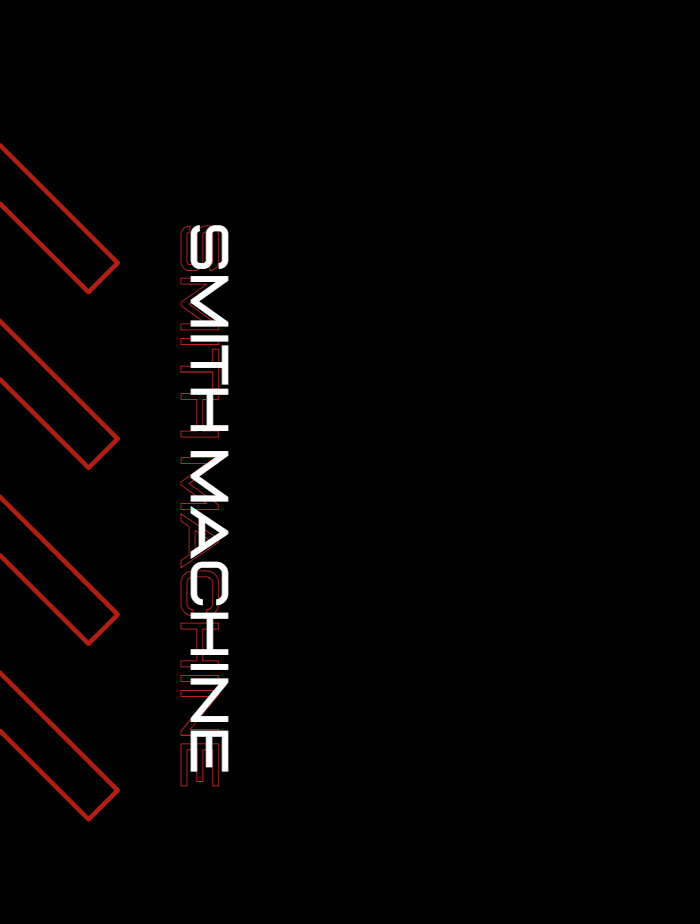
How To Care For Your Smith Machine
- Clean the machine regularly: Use a soft cloth or sponge and mild soap to wipe down the entire surface of the Smith machine, including the frame, barbell, and safety catches. This helps to remove sweat, dust, and debris, preventing buildup and corrosion.
- Inspect and lubricate guide rods and bearings: Regularly check the guide rods and bearings for signs of wear or damage. Apply a silicone-based lubricant to reduce friction, wear, and noise. Follow the manufacturer's recommendations for lubrication frequency and type.
- Tighten and inspect hardware: Examine bolts, screws, and other hardware for tightness and signs of wear. Tighten and replace as needed according to the manufacturer's instructions.
- Check the safety catches: Inspect the safety catches for proper function and signs of wear or damage. Ensure they can be easily adjusted and securely locked in place. Replace or repair any damaged components as needed.
- Inspect the barbell and hooks: Examine the barbell for any signs of wear, such as bending or warping, and ensure the hooks are in good condition. Replace or repair any damaged components as necessary.
- Examine the pulley system (if applicable): If your Smith machine has a pulley system, regularly inspect the cables, pulleys, and attachments for signs of wear or damage. Replace or repair any worn or damaged components as needed.
- Check the weight stack (if applicable): If your Smith machine has a weight stack, inspect it for proper function and alignment. Ensure the weight pins are in good condition and can be securely locked in place.
- Inspect the accessories: Check any additional accessories, such as dip bars or chin-up bars, for signs of wear or damage. Ensure they are securely attached and properly aligned.
- Perform a safety check: Ensure all safety features, such as safety catches and locking mechanisms, are functioning correctly. Replace or repair any malfunctioning components as needed.
By following these preventative maintenance guidelines for a commercial Smith machine, you can help ensure the equipment operates safely and efficiently while extending its lifespan. As always, refer to the manufacturer's instructions for specific maintenance procedures and requirements for your particular Smith machine model.
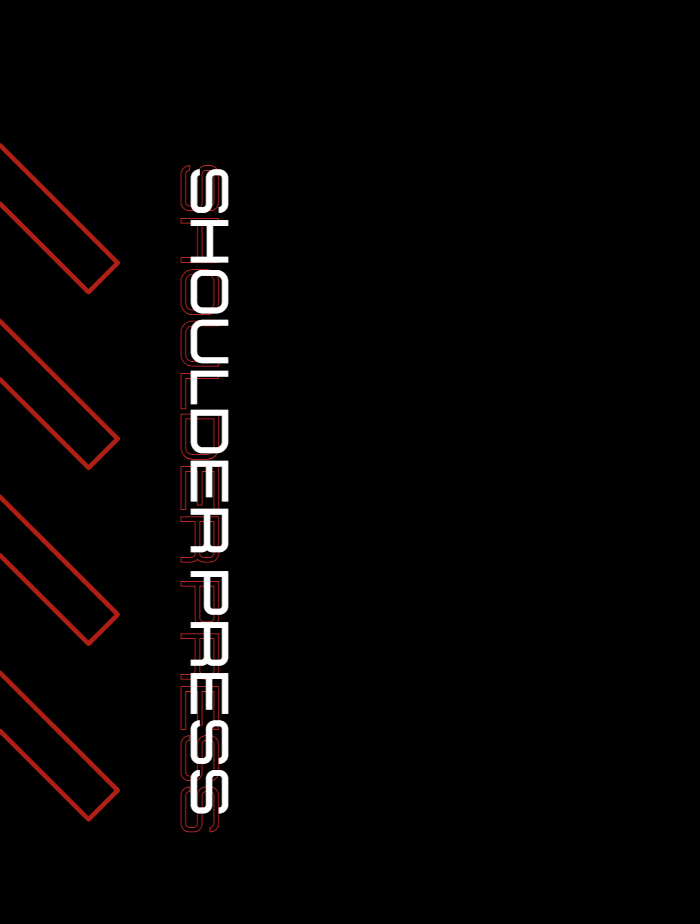
How To Care For Your Shoulder Press
- Clean the machine regularly: Use a soft cloth or sponge and mild soap to wipe down the entire surface of the shoulder press machine, including the frame, seat, backrest, and handles. This helps to remove sweat, dust, and debris, preventing buildup and corrosion.
- Inspect and adjust the seat: Regularly check the seat for tightness and proper alignment, as it may become loose due to vibration and use. Adjust and tighten as needed, ensuring proper positioning and stability.
- Tighten and inspect hardware: Examine bolts, screws, and other hardware for tightness and signs of wear. Tighten and replace as needed according to the manufacturer's instructions.
- Check the weight stack and pins: Inspect the weight stack for proper function and alignment. Ensure the weight pins are in good condition and can be securely locked in place. Replace or repair any damaged components as needed.
- Lubricate guide rods and bushings: Regularly check the guide rods and bushings for signs of wear or damage. Apply a silicone-based lubricant to reduce friction, wear, and noise. Follow the manufacturer's recommendations for lubrication frequency and type.
- Inspect the cables and pulleys (if applicable): If your shoulder press machine has a cable and pulley system, regularly inspect the cables, pulleys, and attachments for signs of wear or damage. Replace or repair any worn or damaged components as needed.
- Examine the handles and grips: Check the handles and grips for any signs of wear or damage, and ensure they are securely attached. Replace or repair any damaged components as necessary.
- Perform a safety check: Ensure all safety features, such as weight stack locks and seat adjustment locks, are functioning correctly. Replace or repair any malfunctioning components as needed.
By following these preventative maintenance guidelines for a commercial shoulder press machine, you can help ensure the equipment operates safely and efficiently while extending its lifespan. As always, refer to the manufacturer's instructions for specific maintenance procedures and requirements for your particular shoulder press machine model.
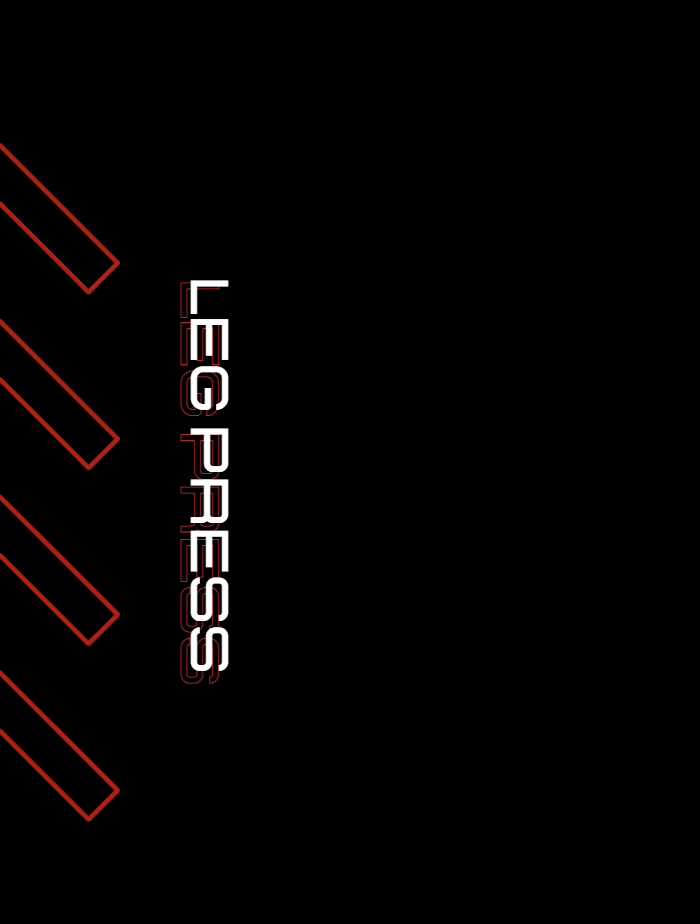
How To Care For Your Leg Press
- Clean the machine regularly: Use a soft cloth or sponge and mild soap to wipe down the entire surface of the leg press machine, including the frame, seat, backrest, footplate, and handles. This helps to remove sweat, dust, and debris, preventing buildup and corrosion.
- Inspect and adjust the seat and backrest: Regularly check the seat and backrest for tightness and proper alignment, as they may become loose due to vibration and use. Adjust and tighten as needed, ensuring proper positioning and stability.
- Tighten and inspect hardware: Examine bolts, screws, and other hardware for tightness and signs of wear. Tighten and replace as needed according to the manufacturer's instructions.
- Check the weight stack and pins: Inspect the weight stack for proper function and alignment. Ensure the weight pins are in good condition and can be securely locked in place. Replace or repair any damaged components as needed.
- Lubricate guide rods and bushings: Regularly check the guide rods and bushings for signs of wear or damage. Apply a silicone-based lubricant to reduce friction, wear, and noise. Follow the manufacturer's recommendations for lubrication frequency and type.
- Inspect the cables and pulleys (if applicable): If your leg press machine has a cable and pulley system, regularly inspect the cables, pulleys, and attachments for signs of wear or damage. Replace or repair any worn or damaged components as needed.
- Examine the footplate and handles: Check the footplate for any signs of wear or damage, and ensure it is securely attached. Inspect the handles and grips, replacing or repairing any damaged components as necessary.
- Perform a safety check: Ensure all safety features, such as weight stack locks and seat adjustment locks, are functioning correctly. Replace or repair any malfunctioning components as needed.
By following these preventative maintenance guidelines for a commercial leg press machine, you can help ensure the equipment operates safely and efficiently while extending its lifespan. As always, refer to the manufacturer's instructions for specific maintenance procedures and requirements for your particular leg press machine model.
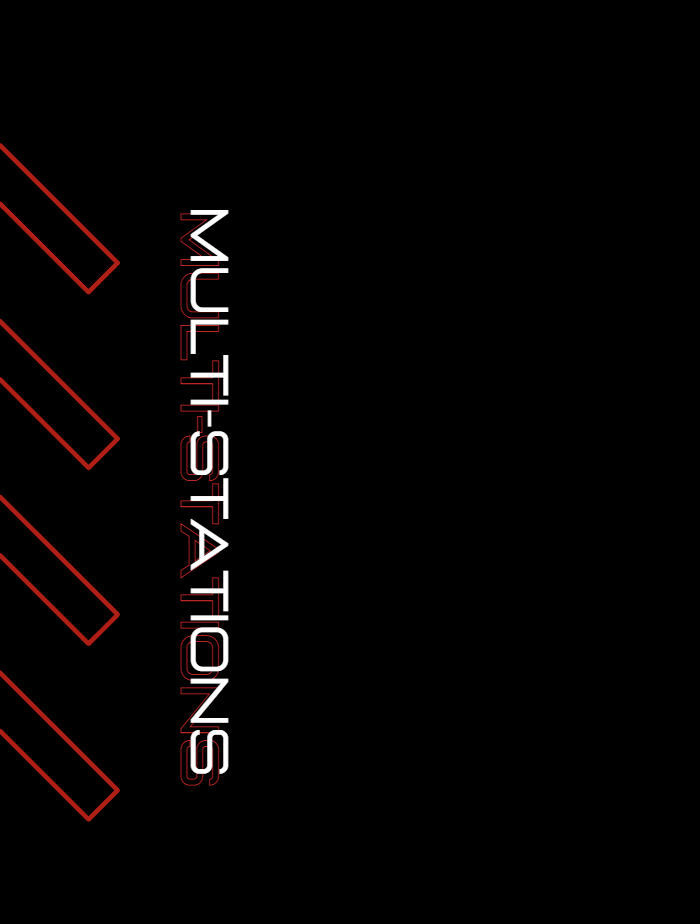
How To Care For Your Multi-Station/ Jungle Gym
- Clean the machine regularly: Use a soft cloth or sponge and mild soap to wipe down the entire surface of the multi-station, including the frame, seats, backrests, handles, and attachments. This helps to remove sweat, dust, and debris, preventing buildup and corrosion.
- Inspect and adjust seats and backrests: Regularly check the seats and backrests for tightness, proper alignment, and wear. Adjust and tighten as needed, ensuring proper positioning and stability.
- Tighten and inspect hardware: Examine bolts, screws, and other hardware for tightness and signs of wear. Tighten and replace as needed according to the manufacturer's instructions.
- Check the weight stacks and pins: Inspect the weight stacks for proper function and alignment. Ensure the weight pins are in good condition and can be securely locked in place. Replace or repair any damaged components as needed.
- Lubricate guide rods and bushings: Regularly check the guide rods and bushings for signs of wear or damage. Apply a silicone-based lubricant to reduce friction, wear, and noise. Follow the manufacturer's recommendations for lubrication frequency and type.
- Inspect the cables and pulleys: Regularly inspect the cables, pulleys, and attachments for signs of wear or damage. Replace or repair any worn or damaged components as needed.
- Examine the handles, grips, and attachments: Check the handles, grips, and various attachments for any signs of wear or damage, and ensure they are securely attached. Replace or repair any damaged components as necessary.
- Inspect the frame and structure: Regularly examine the frame and structure of the multi-station for any signs of wear, damage, or corrosion. Address any issues promptly to maintain the integrity of the equipment.
- Perform a safety check: Ensure all safety features, such as weight stack locks, seat adjustment locks, and attachment locks, are functioning correctly. Replace or repair any malfunctioning components as needed.
By following these preventative maintenance guidelines for a commercial multi-station or jungle gym, you can help ensure the equipment operates safely and efficiently while extending its lifespan. As always, refer to the manufacturer's instructions for specific maintenance procedures and requirements for your particular multi-station model.
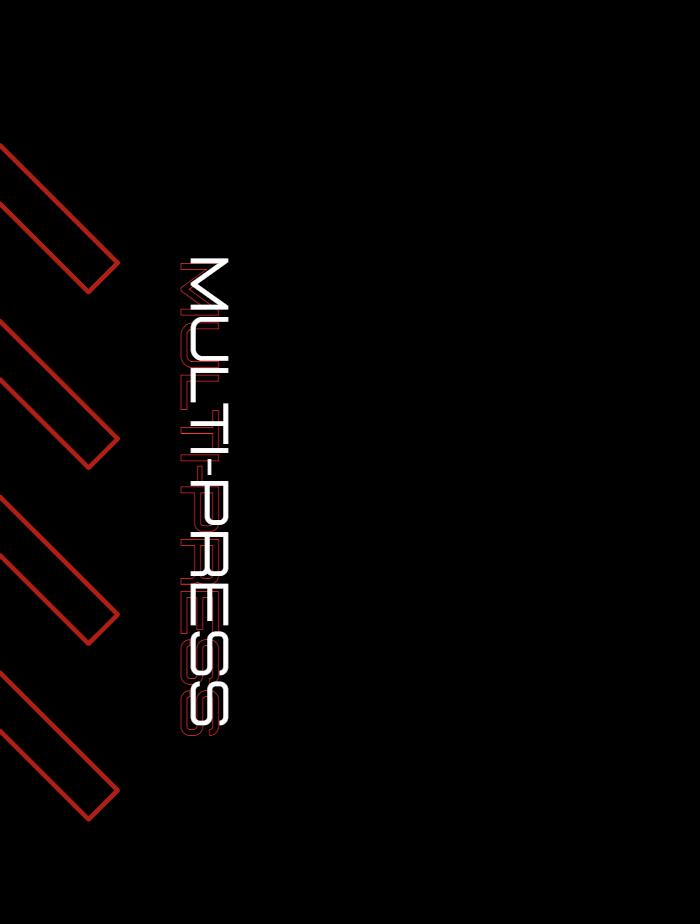
How To Care For Your Multi-Press
- Clean the machine regularly: Use a soft cloth or sponge and mild soap to wipe down the entire surface of the multipress machine, including the frame, barbell, and safety catches. This helps to remove sweat, dust, and debris, preventing buildup and corrosion.
- Inspect and adjust the barbell supports: Regularly check the barbell supports for tightness, proper alignment, and wear. Adjust and tighten as needed, ensuring proper positioning and stability.
- Tighten and inspect hardware: Examine bolts, screws, and other hardware for tightness and signs of wear. Tighten and replace as needed according to the manufacturer's instructions.
- Check the safety catches: Inspect the safety catches for proper function and signs of wear or damage. Ensure they can be easily adjusted and securely locked in place. Replace or repair any damaged components as needed.
- Inspect the barbell and hooks: Examine the barbell for any signs of wear, such as bending or warping, and ensure the hooks are in good condition. Replace or repair any damaged components as necessary.
- Lubricate guide rods and bushings (if applicable): If your multipress machine has guide rods and bushings, regularly check them for signs of wear or damage. Apply a silicone-based lubricant to reduce friction, wear, and noise. Follow the manufacturer's recommendations for lubrication frequency and type.
- Inspect the weight stack and pins (if applicable): If your multipress machine has a weight stack, inspect it for proper function and alignment. Ensure the weight pins are in good condition and can be securely locked in place.
- Perform a safety check: Ensure all safety features, such as safety catches and locking mechanisms, are functioning correctly. Replace or repair any malfunctioning components as needed.
By following these preventative maintenance guidelines for a commercial multipress machine, you can help ensure the equipment operates safely and efficiently while extending its lifespan. As always, refer to the manufacturer's instructions for specific maintenance procedures and requirements for your particular multipress machine model.
